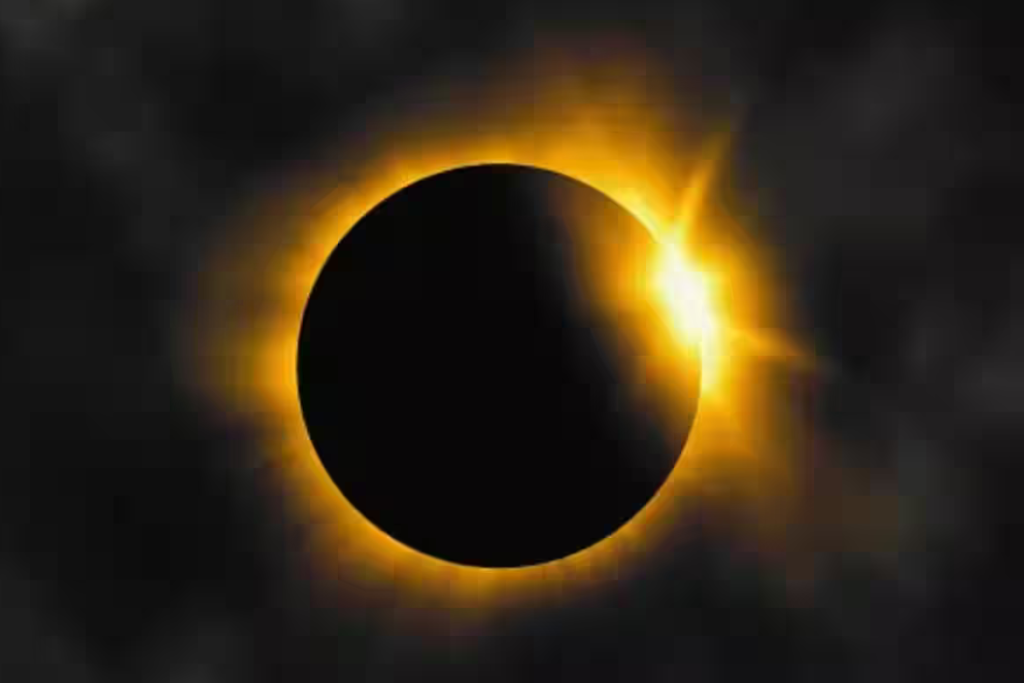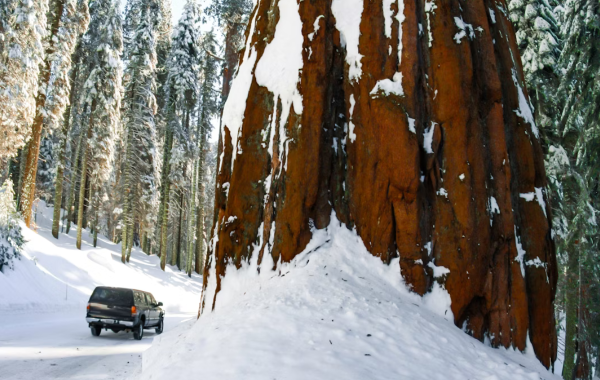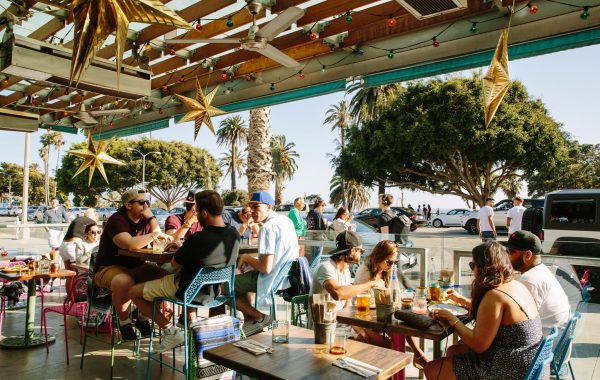The eagerly anticipated day has arrived. In just a few hours, a total solar eclipse will unfold, creating a spectacular celestial show as it traverses parts of Mexico, the United States, and Canada.
Approximately 32 million people in the US reside within the path of totality, where the moon will completely obscure the sun for a brief moment.
The eclipse will commence over the South Pacific Ocean and journey across North America. The first point of totality on its path will be Mexico’s Pacific coast, expected at 11:07 a.m. PT (2:07 p.m. ET), with the eclipse concluding on Newfoundland’s Atlantic coast at 5:16 p.m. local time (3:46 p.m. ET). Consult our map to determine how the eclipse will appear and its timing in your location.
Must Read: Solar Eclipse 2024: Aviation Authorities Issue Air Travel Alert
Locations directly on the path’s centerline will witness an eclipse lasting between 3 ½ and 4 minutes, according to NASA.
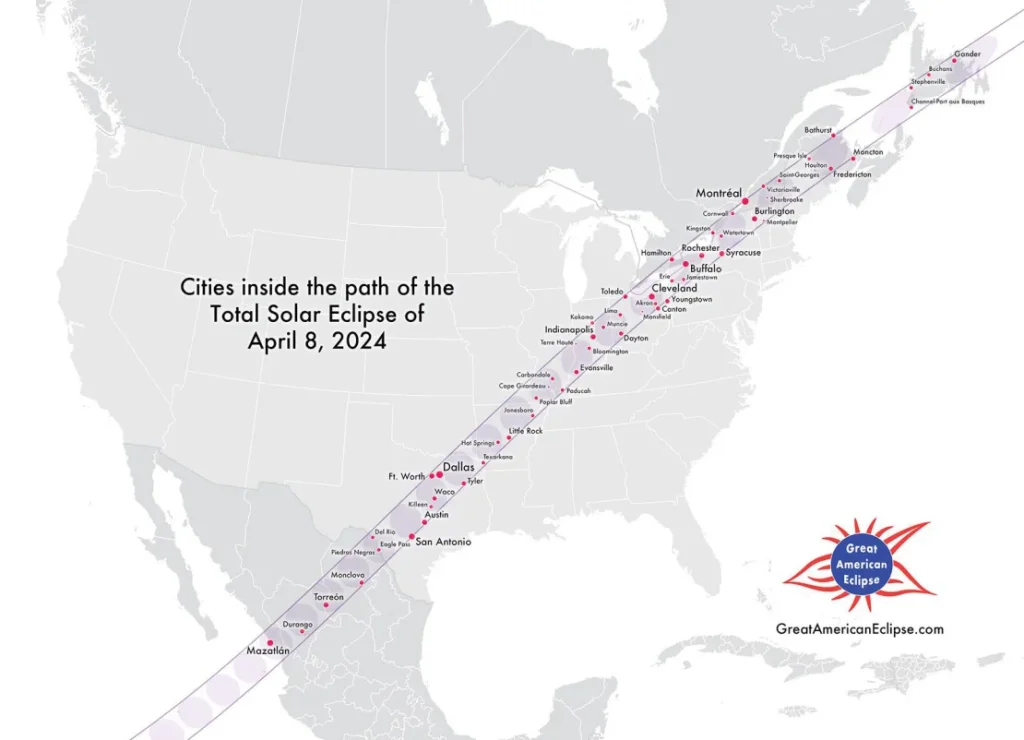
In the US, a total solar eclipse will be visible in Texas, Oklahoma, Arkansas, Missouri, Illinois, Kentucky, Indiana, Ohio, Pennsylvania, New York, Vermont, New Hampshire, and Maine, although weather conditions may dampen viewing experiences in some areas.
Optimal eclipse viewing conditions are expected with only isolated clouds in Vermont through Maine and Missouri through southern Indiana. However, Texas and the eastern Great Lakes regions may experience less favorable weather.
Outside the path of totality, observers will witness a partial solar eclipse, where the moon appears to take a crescent-shaped “bite” out of the sun.
To safely view the eclipse, remember to use certified eclipse glasses or a solar viewer; standard sunglasses will not suffice and pose a risk of permanent eye damage known as solar retinopathy.
Special Moments of the Eclipse: While totality is the highlight, there are other noteworthy phases to observe during the eclipse. The partial eclipse phase, lasting from 70 to 80 minutes, is the longest part of the event. Look for skies darkening about 15 to 20 minutes before totality.
Moments before the sun disappears, watch for Baily’s beads — drops of sunlight around the moon — and the stunning “diamond ring” effect as sunlight streams through lunar craters. During totality, witness the sun’s corona, a luminous halo visible due to the moon blocking the sun’s surface.
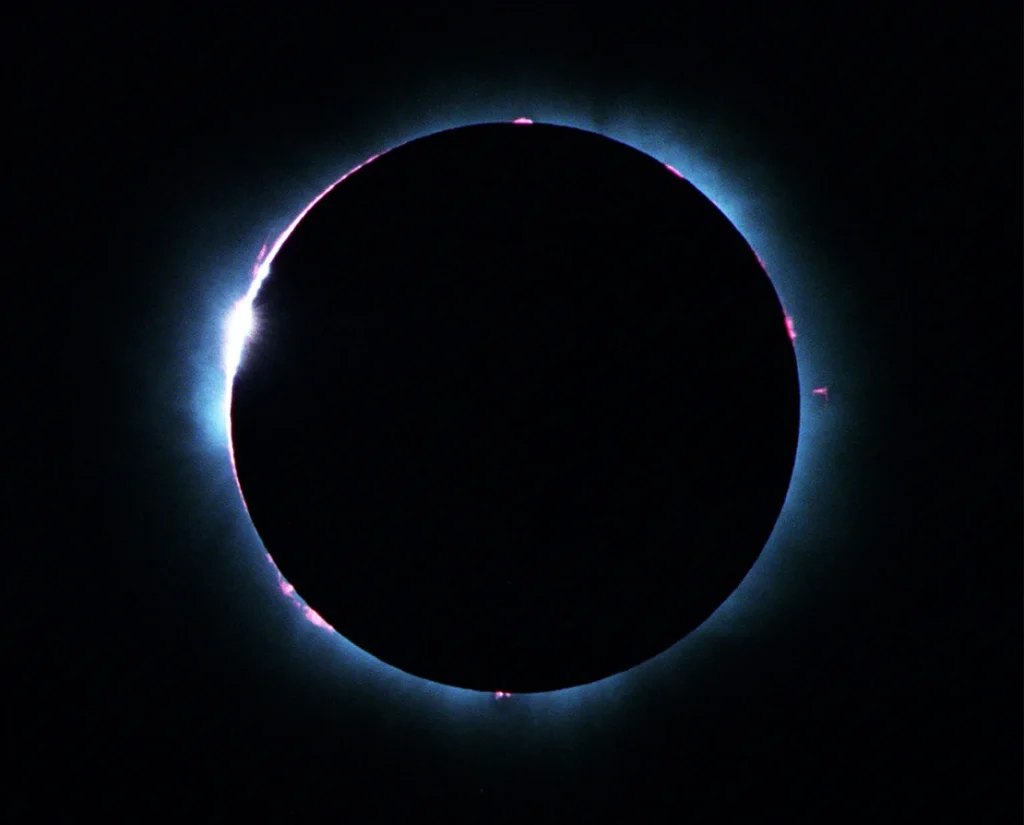
During totality, watch for planets like Jupiter, Venus, Mars, and faint Saturn light, though the “devil comet” may require a telescope. Keep an eye on changes in animal behavior and temperature during the eclipse’s brief darkness. As totality concludes, observe the diamond ring effect, followed by Baily’s beads and a partial eclipse as the sun, moon, and Earth momentarily align.
When will the next eclipse occur?
Following the conclusion of the total solar eclipse, there will be a considerable wait for the next such celestial event visible from the United States.
Residents of Alaska will witness a total solar eclipse on March 30, 2033, while a partial solar eclipse will be visible across most of the US during this event.
The next total solar eclipse visible from the contiguous US won’t occur until August 22, 2044, but totality will only be observed over North Dakota, Montana, and northern Canada.
However, the subsequent total solar eclipse with a coast-to-coast trajectory across the Lower 48 states is scheduled for August 12, 2045. The path of totality will stretch over California, Nevada, Utah, Colorado, Kansas, Oklahoma, Arkansas, Mississippi, Alabama, and Florida, with a partial eclipse viewable in other areas.
For latest travel news and updates, food and drink journeys, restaurant features, and more, like us on Facebook or follow us on Instagram. Read more on Travel and Food Network
Trending on TFN
A Spanish Odyssey: Trafalgar’s Unparalleled Best of Spain Itinerary
Imperial Splendors: Trafalgar’s 10-Day Sojourn in Prague, Vienna, and Budapest


